Authors
Eternal Strands
If you liked roleplaying computer games in the early 2000s, you knew that Bioware was synonymous with cool games. The studio started out as a Canadian game developer and made some awesome things. Baldur’s Gate. Mass Effect. Dragon Age. Eventually they were bought by EA and went downhill. Apparently, the latest Dragon Age, Veilguard, sold 50% below its targets, and EA gutted the studio with massive layoffs.
But I digress. At some point one of the Bioware’s developers, Mike Laidlaw, who was the creative director of the Dragon Age series, left, got together with some ex-Ubisoft developers and founded Yellow Brick Games. Their first title is out now and I bought it.
The Story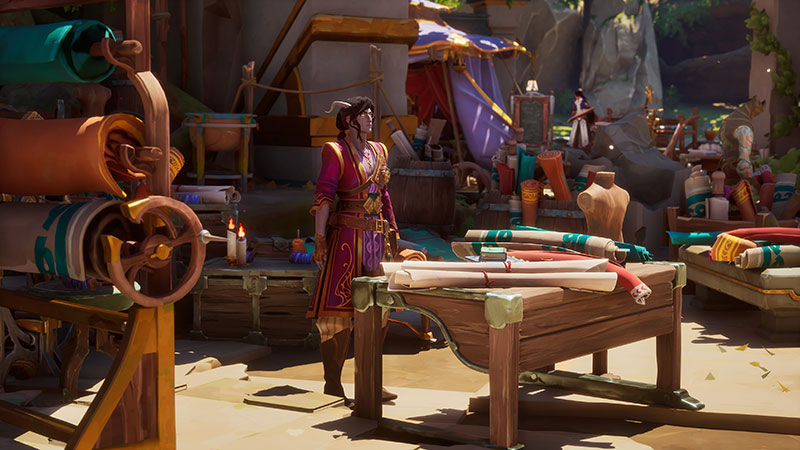
There once was a magic city where the weavers, magicians, created wondrous archons. Things went horribly wrong, a bloody war broke out, and the city sealed itself and the lands around it from the rest of the world. Now the few remaining weavers are despised, and they drift from settlement to settlement.
Our heroine is a new addition to a weaver caravan, a band of magic experts that include a smith, an atelier, and an alchemist among others. This particular caravan is heading straight for the city to surveil the barrier.
Things go horribly wrong once again, and the caravan ends up trapped within the barrier. They must now explore this new land.
This game gives you that unforgettable feeling of being dropped into a very good fantasy book. It’s weird. It has a feeling that is entirely its own. It’s the difference between Oblivion, which felt generic, and Skyrim, which had its own strange atmosphere. Eternal Strands has a vibe.
Launch Trailer (linked for the email readers.)
First things first: the game is gorgeous.
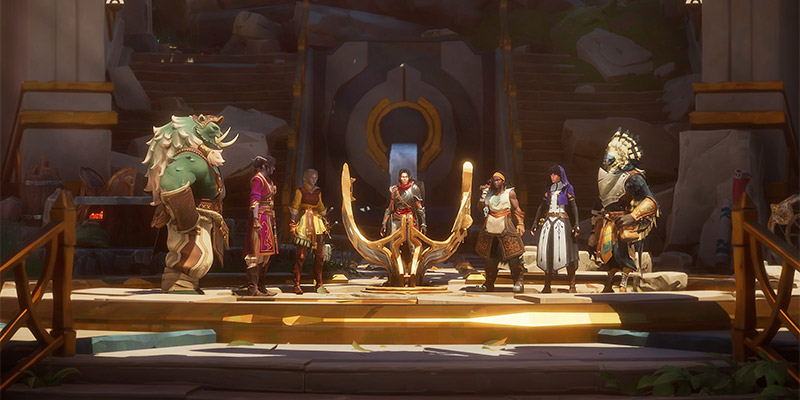
My merry band of companions.
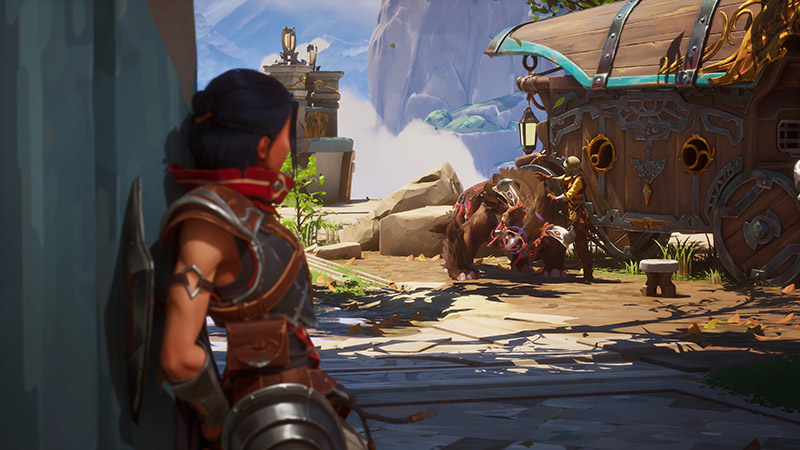
Relaxing moment in camp with the caravan’s quartermaster and whatever that owl bear critter is.
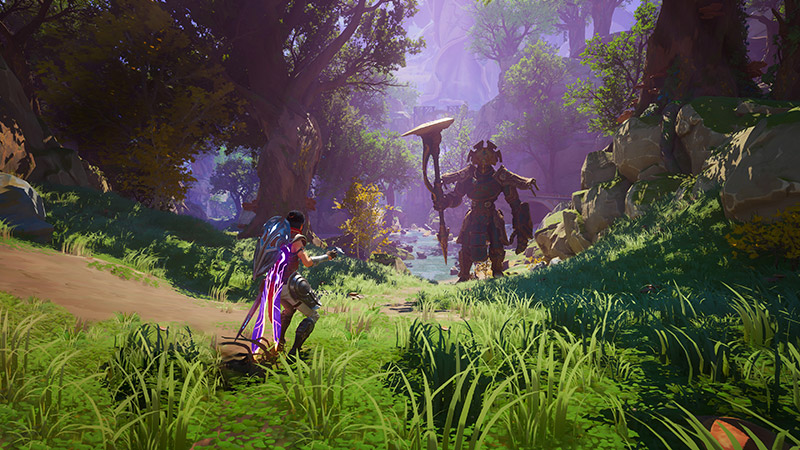
Oh noes.
So great story, great graphics, how is the combat?
You know how in some games, you can occasionally get somewhere high and drop a rock on your enemy and you feel super accomplished? Or when you set some flammable barrels that have no business lying around the battlefield on fire? Okay, the whole game is like that. Except there are no random barrels. It’s mostly explosive plants.
Gameplay Trailer (linked for the email readers.)
Everything is climbable.
First, you can climb anything. Everything. Tree? Yes. Weird obelisk sticking out of the ground? Yes. Mountain cliff? Yes.
You have your sword and a bow and all that, but you also start out with two magic powers called strands: ice and telekinesis. You are a weaver, after all. Ice makes ice, self explanatory. It slows down enemies, puts out fires, and it will damage you if you stand on it. Telekinesis lets you pick up things and yeet them. (To yeet (slang) means to throw something with a lot of force disregarding the consequences.)
Everything is yeetable, if it’s not too heavy.
So, if you suck at combat games, like yours truly, this opens up a whole new world of possibilities.
Here is how my gaming session went:
Me, mumbling to myself: Can I yeet this rock? Can I yeet that rock at this monster? Oh I missed, and the rock hit the tree, and now the tree broke? Can I yeet the tree? Ha! Can yeet the monster? Ha! Do I have anything else to yeet…
Gordon: What is your obsession with yeeting things?
Me: You do not understand this game.
You can freeze the enemy, yeet them at a mountain wall, drop a steel-rich rock on them, the rock will break, and then you can collect all the materials from the rock and the fallen enemy. I found a cave with ice, and since I do not have any fire powers and there were no explosive plants around, I bombarded the ice outgrowths within the cave with rocks, until I broke all of them, and then the ice melted, and I went in to get the treasure.
Everything is valuable.
The crafting system is so interesting. It breaks all crafting materials into 4 broad groups: forged, carved, woven, and tanned. So basically ore, stone, fabric, and leather. You can make weapons and armor, and every item requires a set number of resources. So if the armor requires 6 tanned resources, you can either put basic leather in, or dense akala fur, which better, or another resource that is even better, and what you slot in there changes the bonuses and stats.
And it changes the color of the armor.
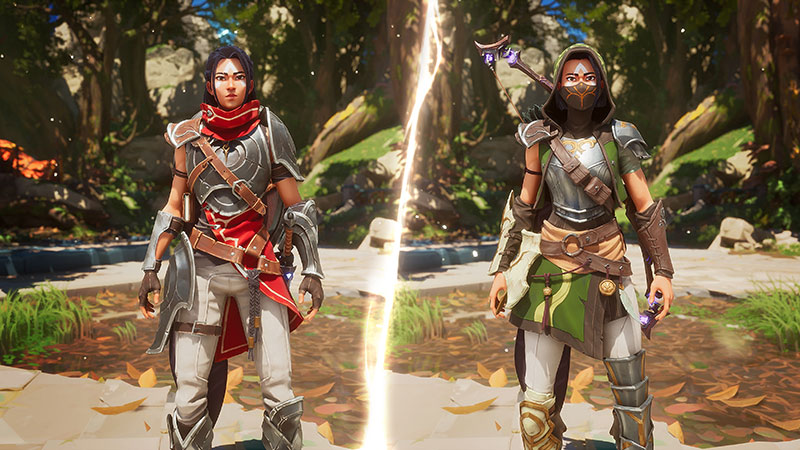
Dragon Age Inquisition, I see you! You remember when you would add one random piece of weird leather to your Inquisition outfit because you wanted the straps on the armor to be white or something? Hehe.
If you have a surplus of low level resources, you can turn them into camp supplies, which allow you to upgrade the caravan crafting stations. The inventory management is limited to materials. You are not going to be carrying a bunch of armor and weapons in your bag. It’s more mission based, meaning you equip yourself and head out.
I haven’t made it very far, because I have to work, but I did manage to beat the first boss on the first try, despite my gaming shortcomings, and I have made it to the Zone #2. But I’ve only played for four hours. My take on it right now – there is no grind. Like none. You’re not going up the levels, the progression is gear based, and it is all about exploring and finding weird loot stashed somewhere behind a rock, and looking for creative ways to nuke your enemies. There is much more that I could prattle on about – the weather, the day and night cycle, etc, etc.
So what are the negatives?
Well, no character creation, and while there is branching dialogue, I’m not sure the responses affect the story over all, but it does add the RPG flavor.
For some reason this game hasn’t been promoted as much as some others. I know the Avowed is coming, I’ve known about it for months, and this just popped out of nowhere. But now you also know it exists. There is a free demo on Steam that walks you through the prologue. The tutorial is very handholdy, but once you make it through, the game lets go and you are freeeee!
Have fun and let me know if you like it.
The post Eternal Strands first appeared on ILONA ANDREWS.
Monday Musings: Memories On Our Walls
A couple of weeks ago, a dear friend posted on Facebook an image of a photo print she’d purchased from me years ago, along with a caption saying she still considered the image one of the things in her living space that gives her joy. I was flattered beyond words. And I thought of her post this past week as Nancy and I finally got around to putting art on our walls.
We’ve only done the living room and dining room (and our respective offices), but already the house feels more like a home. I am itching to put up more. This week, perhaps.
I am fortunate to have learned photography as a younger man and to have captured a good number of display-worthy photos over the years. And so we have framed images from many of our travels that are, or will be, on our walls — pictures from Australia and New Zealand, from Ireland and the American Southwest, from our former home in Tennessee and from a memorable trip to New Mexico a few years back. I’m currently deciding which photos from more recent journeys I should print and frame next.
I am even more fortunate to be the younger brother of James Coe, a remarkably talented wildlife and landscape painter. Jim’s art is all over our house; in the rooms we’ve decorated so far we’ve hung nine of his paintings and prints. I expect there will be more before long. [By the way, you can read more about Jim and see images of his art at his website.]
 What else have I got? Several years back, while attending a World Fantasy Convention, I bought signed prints of Martin Springett’s marvelous cover art for Guy Gavriel Kay’s Fionavar Tapestry. Springett himself was selling the art and he was a charming and effective salesman! Some twenty years ago, while living in our little town in Tennessee, we became friends with Stephen Alvarez and his family. Stephen is an amazing freelance nature photographer, whose work has appeared in National Geographic, Time, the New York Times, and other high profile publications. He and his wife, April, also happen to be fantasy readers, so we arranged a trade: a complete signed, hardcover set of the Winds of the Forelands books in exchange for a print of a gorgeous night sky photo taken in Arizona. I think I got the better deal.
What else have I got? Several years back, while attending a World Fantasy Convention, I bought signed prints of Martin Springett’s marvelous cover art for Guy Gavriel Kay’s Fionavar Tapestry. Springett himself was selling the art and he was a charming and effective salesman! Some twenty years ago, while living in our little town in Tennessee, we became friends with Stephen Alvarez and his family. Stephen is an amazing freelance nature photographer, whose work has appeared in National Geographic, Time, the New York Times, and other high profile publications. He and his wife, April, also happen to be fantasy readers, so we arranged a trade: a complete signed, hardcover set of the Winds of the Forelands books in exchange for a print of a gorgeous night sky photo taken in Arizona. I think I got the better deal.
 We have a few nice pieces of art that once belonged to my parents. We have photos we purchased just outside of Zion National Park — photos of the park taken by photographer David J. West, with whom we chatted for a time one memorable morning. I have in my office a tiny framed pressed bronze image of a Celtic owl, which I love. And I have yet another signed photo print, this one by renowned nature photographer Larry Ulrich. It was a gift from my siblings for my 50th birthday. And we have a signed print from a Native American artist in the Pacific Northwest that we bought while on our honeymoon in Victoria, British Columbia. This print has hung over the mantel in every home Nancy and I have shared. It was the first piece we put up in the new house.
We have a few nice pieces of art that once belonged to my parents. We have photos we purchased just outside of Zion National Park — photos of the park taken by photographer David J. West, with whom we chatted for a time one memorable morning. I have in my office a tiny framed pressed bronze image of a Celtic owl, which I love. And I have yet another signed photo print, this one by renowned nature photographer Larry Ulrich. It was a gift from my siblings for my 50th birthday. And we have a signed print from a Native American artist in the Pacific Northwest that we bought while on our honeymoon in Victoria, British Columbia. This print has hung over the mantel in every home Nancy and I have shared. It was the first piece we put up in the new house.
 Of course, we have tons of smaller photos all around the house, of our darling daughters, of our parents and siblings, of friends, of our wedding.
Of course, we have tons of smaller photos all around the house, of our darling daughters, of our parents and siblings, of friends, of our wedding.
And I suppose the point of all of this is that every one of these pieces of art, every single thing that I have taken care to center on a wall and hang at the right height and fiddle with until it hangs straight (only to have Nancy come into the room and adjust it so that it really hangs straight) brings me joy. They remind me of places we’ve seen that stole our breath and seared themselves into our memories. They remind me of experiences we cherish and people we love.
Each time we put up something new, it invariably puts a smile on my face.
Take a look around your home, and let the memories stirred by the things you’ve put on your walls bring a smile. And if you care to, share a favorite or two on the Facebook feed for this post.
Have a great week.
State of the Author, February 2025 edition
Monday Meows
Hello fellow cats, I would like you to meet my fiance, Concretia!
You what now?
Do you think I should tell him?
Naw, it won’t help.
Matthew Corbett fan fiction by Pete Mesling
 At the Leviathan book launch, Robert McCammon told me that, now that the series was complete, he would love to see other people write Matthew Corbett fan fiction.
At the Leviathan book launch, Robert McCammon told me that, now that the series was complete, he would love to see other people write Matthew Corbett fan fiction.
Author Pete Mesling has done just that, and we’re proud to present “Troubling the Past,” his story set in Matthew Corbett’s world!
Pete also narrates the story in a YouTube video on his channel. From Pete:
“Troubling the Past” is my foray into fan fiction. Set in the world of Robert McCammon’s Matthew Corbett books, my story occurs before the events of The King of Shadows and aims to do a little after-the-fact foreshadowing of that novel. I wouldn’t say it contains any spoilers per se, but you may find “Troubling the Past” more enjoyable if you’ve read McCammon’s novel first (all of the Corbett novels, actually).
You have several options available:
- Read the story on RobertMcCammon.com
- Download an AZW3 ebook
- Download an EPUB ebook
- Download a MOBI ebook
We’d love to see more! From Robert McCammon: “The fun and interesting thing here is that you can do straight mystery stories, character studies, or delve into the supernatural as much as you please.” Submissions can be sent to the webmaster.
Alabama Writers Hall of Fame Class of 2025
The Alabama Center for the Book and the Alabama Writers’ Forum are excited to announce the Alabama Writers Hall of Fame Class of 2025! Tickets to the Awards Gala are on sale now!
Eight distinguished authors will be inducted into the Alabama Writers Hall of Fame at The University of Alabama’s Bryant Conference Center on Friday, March 7th , 2025.
The 2025 class inductees include Ace Atkins, Frye Gaillard, Joy Harjo, Janice Harrington, Robert McCammon, and Dr. Sue Brannan Walker. Authors C. Eric Lincoln and Brad Watson will be inducted posthumously.
Tickets can be purchased here.
The honor was first announced in May 2025. You can read about it here.
Comment on A Beginner’s Guide to Drucraft #30: Motion Sigls (II) by Valentin
I’am a little puzzled abouth this question: Is essentia effected by gravity?
If it wouldn’t, I guess it would have a hard time sticking to the earth, because it shouldn’t be effected by objects that aren’s drucrafters and earth is quiet quick. But if it is, I must wonder if there is essentia on the moon or the sun and then, due to sun’s enormous mass, it seams that there must be a realy big well in the sun. Is that right? Will we see space action in the series?
OUT NOW – The Unnatural Order (Schooled in Magic XXVII.
For generations, the Magicians of Celeste have chafed under at the limitations of the Compact, the treaties between the Magical and Mundane communities of the Allied Lands, and worked towards their abolition, envisaging a world in which magical supremacy would be established, allowing them to explore newer and greater fields of magic while keeping the powerless mundanes firmly under control. Their dreams were not taken seriously, until now.
With the end of the Necromantic Wars and the Allied Lands in disarray, they have finally stepped into the light and taken control of their city, declaring independence from the Allied Lands and creating a nightmare for both mundanes and any magicians who refuse to toe the line. And they don’t intend to stop. It is only a matter of time before they export their new regime to the rest of the continent, crushing anyone who stands in their way.
For Emily, who has traced the enigmatic Hierarchy to Celeste, there is no doubt that the new regime is an ally to a far older and darker threat. Millions of lives are at stake, thousands killed and tens of thousands more forced into slavery. The regime must be stopped, no matter the cost, before it imposes its own order on the entire world. But how can she prevail against an entire city of magicians, and a threat that has been decades in the making?
Download a FREE SAMPLE, then purchase: Amazon US, UK, CAN, AUS. Books2Read (other vendors). And read the Afterword here!

Comment on New Beginnings by Rebecca Newsome
Great news. Cannot wait to read Book 3 and 4. Glad you are having fun with the writing!
Happy Hughday!
I know that the previous post was Chapter 2 Part 1 but it actually should be Chapter 1 part 2.
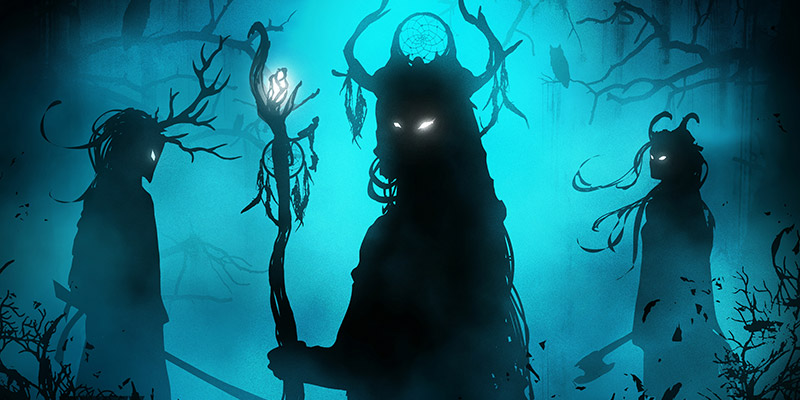 Chapter 2 Part 1
Chapter 2 Part 1
Druidism was a strange religion, Hugh reflected.
He stood on the edge of the hollow, his arms crossed. Around him the woods were waking up. Golden sunshine spilled from the early morning sky, setting the fall leaves aglow. Squirrels dashed through the branches, chittering at each other. A small herd of deer peeked through the gaps between the tree trunks.
On the other side of the hollow, Aidan Zhào, Dugas’s chief apprentice, studied the twine wrapped around the oak. He rubbed the twine between his fingers, smelled it, and rubbed it again. In the hollow, Fiona, another of the senior apprentices, lay down flat in her white robe, looking at the bones from the side, her face in the dirt. A third apprentice, whose name he couldn’t remember, crouched by some bushes.
Lamar came striding through the trees, carrying a thermos. The tall, lean centurion took in the scene, shook his head, and passed the thermos to Hugh. Hugh screwed the cap open and took a gulp. Coffee. Good, real coffee. Just what the doctor ordered. He saluted Lamar with the thermos.
Lamar nodded at the druid by the bushes. “What is he doing?”
“A rabbit showed up about ten minutes ago,” Hugh said. “They’ve been staring at each other ever since.”
Lamar blinked and pushed his glasses up the bridge of his nose. “Do you think he’s talking to the rabbit? Are they communing?”
Hugh just looked at him.
Aidan pulled the twine back from the tree trunk and released it like a rubber band. The twine sagged. Aidan tilted his head to the left, studying it.
Bale marched up. Five foot nine, with dark red hair and skin that burned from prolonged exposure to table lamps, Bale was built like a tank. Lamar, despite having four or five inches of height on Bale, was at least fifty pounds lighter. Standing side by side, they made an odd pair – one looked like he could scale a mountain without a rope and the other like he would punch his way through it.
The druids turned as one and waved at Bale.
He smiled and waved back. “I told you these guys were good.”
“Define ‘good’,” Lamar said.
Bale pointed to the druids. “Clearly they know their business.”
Aidan hugged the oak, thought for a moment, then turned around and splayed himself against the tree in a kind of backward hug.
“Yes, if that oak had arms, it would be hugging him back,” Lamar observed.
“These are my culture’s sacred traditions,” Bale growled. “Show some respect.”
Hugh raised his hand. The two centurions shut up.
Bale and Lamar never saw eye to eye. Lamar was a strategist who thought a lot and said little, while Bale blurted out whatever came into his head as soon as it occurred to him. Left unchecked, they would bicker, and Hugh didn’t have time for that.
He’d taken Elara and Savannah, their head witch, to the site in the middle of the night. Neither his wife, nor Savannah, had any idea what the bones were. After some discussion, the three of them agreed that at first light, they needed to get the Dugas’ druids on site. He had gotten zero sleep.
The druid by the bushes went down on all fours, lowered his head, and swiveled it side to side. A large rabbit popped out of the bush, rubbed its head on the druid’s head, and scampered off.
“Bale, I swear by all that is holy, if they start singing to the woodlands creatures, I’m out,” Lamar said.
“If you don’t want to be here, just go.” Bale shrugged his massive shoulders. “Otherwise, be quiet. You might learn something.”
The druids came together, spoke in hushed tones, and then approached, Aidan in the lead.
Hugh braced himself. “Yes?”
“It is druidic,” Aidan said. “It wasn’t done by any of us.”
“How do you know this?” Hugh asked.
“It is druidic because druidic implements were used in creating this site,” Aidan said. “It is not any of us, because they used stinging nettle twine. I am allergic to it.”
He held up his hand, showing reddish fingers and welts on his palms.
“We use dogbane twine,” Fiona said. “Stinging nettle is an invader, while dogbane is native to the continent.”
“So does this mean it’s a European druid?” Hugh asked.
“It could be,” Aidan said. “We tend to use what’s natural and familiar to us.”
“However,” Fiona said. “Some people are traditionalists. They import their supplies.”
“If someone bought stinging nettle twine, we would know,” Aidan said. “All of our supplies are locally harvested and communal. Unless someone is hiding covertly purchased twine under their bed, it wasn’t one of us.”
“So the culprit could or could not be a European druid and they are probably but not certainly not one of you?”
“Yes,” Fiona confirmed.
Wonderful.
“It’s bad,” the rabbit druid said.
Hugh looked at him.
“It goes against Dugas’ teachings,” the rabbit druid elaborated. “We’re meant to be one with nature, not to tame or conquer it. This magic is imposing human will onto nature. Changing it, twisting it. The rabbits do not approve.”
Bale nodded sagely.
“Did the rabbit see who might have done it?” Lamar asked.
The rabbit druid looked like him as if Lamar was a toddler asking to drive a car. “We all look the same to them. They are only rabbits, after all.”
Hugh rubbed his face.
“Could you come with me?” Aidan asked.
Hugh followed him to the oak.
Aidan pointed to a shallow scratch on the bark. “We know that the twine was wrapped around the tree right here, about thirty-two inches off the ground.”
The senior apprentice nodded, and the two other druids wrapped the twine around the trunk matching the scratches on the bark and held the edges of the twine together. Aidan hooked the twine with his fingers and pulled it from the tree.
“As you can see, it is wrapped exactly twice around the trunk. But we have all this slack.”
And there it was, the worst-case scenario.
“Is the twine lubed with fat?” Hugh asked.
“It is. I’m so sorry,” Aidan confirmed.
Figured.
“Fuck,” Bale said.
“Exactly,” Aidan said.
“Was something bound to the trunk?” Lamar asked.
“Show him,” Hugh told them.
Fionna sat by the roots of the tree, her back against the trunk. Aidan wrapped the twine around her neck and wound it back around the tree. The cut ends matched perfectly.
“Human sacrifice.” Lamar hissed the words.
“We must confer with our master,” Fionna said. “This is not permitted in our domain.”
Sacrificing a human was done primarily for two reasons: as a tribute or a trade. The first was done as an offering to the gods; the second, to acquire a massive boost in power, usually for a specific purpose. And they had no idea what that purpose was.
An Iron Dog came running through the woods.
“Yes?” Hugh asked.
“A messenger from Aberdine, Preceptor. They are waiting for you.”
When it rained, it poured.
Hugh looked at the druids. “Tag it, bag it, and undo as much of this as you can. Bring it all to Bailey and quarantine it.”
The druids nodded in unison. He turned around and headed back toward the castle to put out whatever new fire was waiting for him there.
It was going to be a long day.
The post Happy Hughday! first appeared on ILONA ANDREWS.
Comment on A Beginner’s Guide to Drucraft #30: Motion Sigls (II) by Kevin
In reply to Benedict.
Ah okay I just assumed he used a Motion sigl in the raid since he went really fast against the raiders and I thought it was a Motion sigl like Lucella was using to escape.
Would it be safe to say the Motion sigl they used are better for long distances and the reflex enhancer is better for short bursts/close encounters with enemies?
Comment on A Beginner’s Guide to Drucraft #30: Motion Sigls (II) by Benedict
In reply to Kevin.
Calhoun’s specialities are Light and Motion, but he’s a highly skilled drucrafter and, just like Stephen, he’s fully capable of using sigls from his ‘weak’ branches, too. He has a reflex-enhancing Life sigl that he carries when expecting trouble (and at other times as well).
Comment on A Beginner’s Guide to Drucraft #30: Motion Sigls (II) by Kevin
Fascinating as always Steven hasn’t used any real Motion sigls yet and it’s nice to see some basic ones. Mark other sigls are probably a Shield and the Hurl sigl be interesting to see them in the future.
Would Calhoun using a Life reaction sigl versus a Motion speed sigl in the raid even though he specializes in Motion be because it was continuous and not triggered or is there another reason?
Mystery Walk limited edition from Lividian!
From Lividian Publications:
Mystery Walk by Robert McCammon
New Limited Edition Just Announced!
Lividian Publications is pleased to announce our signed, numbered, and slipcased Limited Edition hardcover of Mystery Walk by Robert McCammon, which will be shipping in May.
Featuring a breathtaking full-color dust jacket by Ben Baldwin and twelve striking black-and-white interior illustrations, this beautifully designed volume will be a must-have for any serious horror collector.
 Not ten minutes after that announcement came this:
Not ten minutes after that announcement came this:
Bad Moon Books
Buchheim Verlag (Germany)
Camelot Books
Cracked and Spineless Books (Australia)
Kathmandu Books
Midworld Press
Overlook Connection
SST Publications (UK)
Subterranean Press (link is directly to their order page)
Veryfinebooks
Ziesings
More news soon! Thank you for your continuing support and enthusiasm!
Best,
Brian
Comment on A Beginner’s Guide to Drucraft #30: Motion Sigls (II) by Celia
Interesting that Calhoun apparently uses a kinetic barrier rather than a kinetic shield. I guess doing so allows him to focus on offense as well as just defense? You’d think he’d want a sphere rather than the “curved barrier” we see in Chancery Lane though. The lack of a sphere almost got him shot in the back. And I can’t imagine he chose that shape due to financial issues? Unless Charles wants to keep him on his toes.
DOGE- Supernatural Division (episode 2)
Variety: Russell Rothberg to be showrunner for Swan Song!
News from Variety about the upcoming TV adaptation of Swan Song!
The series adaptation of the Robert McCammon novel “Swan Song” has found its writer, Variety has learned exclusively.
Russell Rothberg has boarded the project, which was first announced in January, to serve as writer, executive producer, and showrunner. The show is now being taken out to market.
Business Musings: How Entertainment Fits Into Our Lives
Please note: This originally went live on my Patreon page on Sunday night, January 26, 2025. Since then, even more crap has happened in the world and people are freaking out. (Freaking out, btw, does not help. Calm, deliberate, and calculated action helps, along with…well, read the post.) If you want to see most of my business posts these days, you’ll find them on Patreon. I’m only going to post a handful here.
How Entertainment Fits Into Our LivesI spent the day of 9/11 with the television pegged on CNN, while I talked on the phone and handled e-mail. At the time, Dean and I were traditionally published and a good 80% of our income came from New York City.
We had friends there, friend-family there, and so much business there. I spoke to people, searching for them, figuring out if they were okay or not (and, physically, they were). I informed my agent’s assistant that she was in an evacuation zone, and she needed to leave now, something her boss (who was in Connecticut) apparently hadn’t been willing to do. No one knew what the toxic smoke emanating from the buildings was going to do, so they were evacuating the entire area. I reminded her that she could work from home, because she was afraid she would lose her job if she left.
She got out and she got safe.
Dean, always the most level head in any emergency, grabbed every single extra book we had, along with the books and advanced reading copies that we had stacked up to trade in at Powell’s Bookstore in Portland, Oregon. At the time, we lived in Lincoln City, on the coast.
Dean packed the car and took off for Portland, over two hours away. Neither of us liked that he was going, but we felt he had to. At that moment, we had no idea if the attack was localized to the East Coast or if other major cities were going to get hit. We had no idea what would happen to the economy, especially if the attacks continued, and we had no idea if Dean would be safe as he headed to downtown Portland.
What he knew, and what I quickly realized, was that our entire income stream was about to dry up. We had some money in the bank, but not enough to get us through six months to a year (worst case).
Those ARCs and first editions that he brought to Powell’s were catnip for collectors and he got thousands of dollars for them.
The next morning, Powell’s shut down all book buying. Dean’s Hail Mary journey was prescient and would have been impossible if he had waited even 24 hours.
That money got us to January, which was when the first payments started trickling back out of New York City. He was smart, but he did have to spend the day listening to the chaos coming out of New York and D.C. We had cell phones, but most of us used landlines. Still, I kept him updated on what I knew, and after I reached everyone I could, I spent the day locked in horror, alone with the TV and all of those awful images—some of which no major network has replayed.
By the time he got home, we had to shut it all off. We couldn’t handle the stress anymore. We knew that the future was uncertain—bleak, difficult and frightening. For those of you who were children then or those of you who weren’t even born, this is what it felt like: We had no idea if those planes were the first volley in a war. We were catapulted from a familiar world with familiar patterns into one filled with chaos, uncertainty, death, and violence.
I do not remember what we had for dinner that night. Nor do I remember what we talked about if anything. I do remember that every single cable channel—even the ones that should have been showing classic movies—would break in with updates. Not that the movies were any comfort. Every one that had been scheduled was set in the before times, and some even had images of the World Trade Center—the still-standing World Trade Center, before the big disaster.
So there was no television option. But we had a streaming satellite radio subscription. I turned on one of the stations that just played music—no talk at all—and I think I left it on for days.
I had a book due in two weeks, which was almost laughable. That was the project I was working on. But I couldn’t focus on it. I did not return to my writing desk for ten days. By then, I knew that the book deadline was going to be extended (my editor was not in New York at that time; she had been in France), and I had time.
I wrote a short story called “June Sixteenth at Anna’s,” which was about 9/11 in a sideways way, but more than that, it was about worlds lost, moments that are forever gone, and are mostly impossible to recover. When it was published in Asimov’s in 2003, 9/11 was still close. The story finished third in the Reader’s Choice Awards and was chosen for a year’s best volume.
But I didn’t write the story for readers.
I wrote it for me. I had to clear my palate of the horrors I’d seen. I also had to work through that jolt of fear that happens to all of us when our life’s path suddenly takes a terrible turn.
After I wrote the story, I was able to return to the novel. I guess I had officially gone back to work.
But quieting my mind was harder. When there are blanket emergencies—things that happen on a national or worldwide scale—it’s hard to escape them. And sometimes, you shouldn’t escape them.
This past year, we had to deal with a lot of crap in a business we built lovingly for our own work. The betrayal and breach of trust that we suffered also had economic and practical ramifications, and we had to handle those quickly and with great attention.
I didn’t sleep much during that period (or after Dean shattered his shoulder or much with another emergency the year before that), and I didn’t have a lot of leisure. An hour of television at night, the occasional Aces basketball game, and then (stunningly to me) football in the fall provided a bit of distraction.
Mostly, though, I couldn’t afford to be completely distracted. I was in the middle of an emergency and I had to concentrate. When I was able to find a distractable moment, I needed to choose my reading wisely. I had to avoid the new or the challenging. I read a lot of mediocre romance and some rather terribly done mysteries, while waiting for my favorite authors to release new books. And even then, I would balk at some of the topics they had chosen and set the books aside for later.
I’m just getting to later now.
But this was an emergency that I was literally in the middle of. If I didn’t act correctly, make the right choices, and handle the problems in the right way, my business might crumble. Dean was right beside me as were Chris York and Stephanie Writt. I have no idea how we got through June, July, and August, but we did, and the business is better for it.
Friends of mine are going through something similar right now. I am writing this on Sunday night, as the City of Los Angeles and the surrounding areas are finally, finally getting rain after months of drought.
The fires that sprang up during the Santa Anna winds of January made many of my friends flee their homes. I followed on Facebook with some, because I’m not on Twitter. Others I communicated with by phone, and still others I couldn’t locate at all because they had a limited social media presence…and I didn’t feel comfortable calling them in the middle of an emergency. Let me rephrase: a fleeing for your life emergency. I contact friends during emergencies all the time, but if I know they’re in the middle of the crazy shit, I wait a day or so to see if they need something.
Most of my friends who are going through this aren’t hurting for money. They fled to hotels, and one friend noted on Facebook that he had paid for two weeks, just in case.
Not hurting for money makes one aspect of the crisis easier. It means that you have the ability to pay for two weeks in a hotel—any hotel. Sleeping in your car isn’t necessary. Trying to get to family or friends who can put you up (if they’re willing) isn’t necessary either. You can buy clothes and toothpaste, buy a carrier for your dog, and get food.
But it doesn’t help the emotional part. And that second weekend in January, when everything was burning, reminded me of the other disasters I’ve seen or been through: the TV coverage was relentless and it was almost everywhere.
People who had evacuated couldn’t find anything to rest their brains, if they wanted to, although it’s easier now with streaming. If they escaped with their laptops or their iPads or their phones, they could watch something.
At that point in a crisis, you need something mindless.
Eventually, though, you have to dig out. You have to repair the damage. You have to see the lay of the land.
For many, the presidential election has also precipitated a crisis. A lot of people unplugged and disappeared after the election, unable to face what was ahead. The rest of us soldiered on, although we’re handling the firehose of change differently than we did in 2017.
I know some of you are happy with the election. Please don’t tell me, because what’s bothering me the most right now is the blatant bigotry against anyone who isn’t cis, white, and male. If you can tolerate that, you’re free to leave without comment, because if you do comment about this particular point, I will block you.
I’m on social media and yes, in a bit of a left-wing bubble. And I’m seeing a lot of people call anything that is entertainment “bread and circuses.”
They’re wrong.
Entertainment is how we survive.
Yes, we all need to pay attention. We need to fight for our little corner of the universe, whatever that means. (You can see which corner of the universe I’m focusing on from my note about bigotry above.)
But we can’t be on alert twenty-four hours per day for the next few years. Or even for the next few months.
That way lies complete disaster. People can and do collapse from exhaustion in crisis situations (however they define that), and then they’re of no help at all. (Sometimes, as I mentioned above, you have no choice; you must run full speed ahead. But at a certain point, you have to stop running and start building.)
A surprising part of that exhaustion isn’t from lack of sleep; it’s from lack of rest.
The brain is an amazing thing. It can marshal defenses, activate the sympathetic nervous system, and get us through whatever we’re facing. But it’s taxing on the body, and not something we can sustain for years.
I wanted to dig a little into the science for you, but I’m not an expert. Instead, I found something from the Association of Critical Care Nurses. This blog post by Sarah Lorenzini explains the science of crisis response. She’s writing for critical care nurses, but the article applies to all of us.
She writes:
Maintaining your well-being is essential for mastering the SNS response. Practice self-care to mitigate stress and enhance resilience. Engage in activities that promote physical and mental well-being, such as exercise, mindfulness, hobbies and spending time with loved ones. Being tired or hypoglycemic exacerbates negative symptoms associated with the stress response. By nurturing yourself and prioritizing adequate rest, hydration and nutrition, you can maintain composure and sustain your ability to provide compassionate care in demanding situations.
Let me reiterate something buried in the middle of this post, for the “bread and circuses” crowd. She writes, Engage in activities that promote physical and mental well-being, such as exercise, mindfulness, hobbies and spending time with loved ones.
Hobbies. Reading, watching movies and TV, going to sporting events…are hobbies. And hobbies are essential for survival in tough times.
Understanding the science is important—at least to me—and I learned long ago about the importance of shutting off the mind and going “somewhere else” for a little while. Sometimes movies and TV do that, sometimes sports does, but nothing is better than a book or a short story.
(During the worst of our crises last summer, I could only focus on short stories. But they were a lovely distraction.)
I learned this during 9/11. I couldn’t read mystery novels or even romances because at that moment, I was so shaken I wasn’t sure if I believed in happily ever after.
I ended up reading made-up world fantasy novels. They are the actual definition of “somewhere else.” Not somewhere familiar either. Somewhere I’d never thought of.
Science fiction is the same, but at the time I couldn’t find anything long and immersive. I ended up reading a fantasy series that I had on my TBR pile.
It was that series that reminded me of the importance of escape.
Fiction is survival for people in difficult situations. Fiction is necessary.
And we can’t dictate what kind of fiction other people need.
When I was a child living in an abusive household, I consumed as much fiction as possible. Sometimes I needed the escape of a made-up world, but I also read a lot of scary books—many of the Gothic novels because I knew they had a happy ending. And those books reinforced that no matter how dark the world got, people could survive.
Interestingly enough, to me the reader at least, the people who survived were always the ones who took action. Yes, that’s a tenet of fiction. After all, who wants to read about a whining protagonist who does nothing and needs to be rescued at the end?
But it’s also consistent with our biology.
The critical care nurse writes this:
I understand the surge of hormones in response to an emergency and how paralyzing it can feel. However, I have learned to channel my SNS (sympathetic nervous system) to help optimize my performance as a nurse. Instead of perceiving the physical manifestations of stress as hindrances, I reframe them as signs that my body is preparing me for peak performance. I embrace the increased heart rate, rapid breathing and heightened senses as indicators that I am ready to act and make a difference.
Our job, as writers, is to give the people responding to a crisis—any crisis—that escape which will give them the right kind of rest. It might enable them to get an extra hour of sleep at night. It might help them relax just enough to calm down and then move forward.
What we do is extremely valuable.
We should not dismiss it as “bread and circuses,” something to be avoided in a crisis.
We should embrace it as the necessity that it is.
That’ll enable us to continue to write and it’ll allow us to make time for our own rest through whatever crises we experience in our lives.
Storytellers are essential.
So tell your stories, no matter what is going on in the world.
And read the kinds of stories you love, without guilt or judgement.
It’s a great way to take care of yourself and the world around you. Because we all need that little moment of rest.
“How Entertainment Fits Into Our Lives ,” copyright © 2025 by Kristine Kathryn Rusch.
Addendum added on February 1:
I’m currently reading the issue of The Hollywood Reporter that came out during the fires. It had this tidbit: Apparently LA Residents (even those who had been evacuated) flocked to the movies in the non-fire zones. People needed an escape.
https://www.hollywoodreporter.com/movies/movie-news/wildfires-movie-theaters-1236111782/
As one woman said, “What else are we going to do? I wanted to get away from it all.”
Just more evidence that entertainment is important, even in the tough times.
DOGE- Supernatural Division (a fun satire story)
A Dirty Betrayal
Not long ago, I made this blanket for Kid 2.

It was made with Stylecraft DK yarn. I don’t really care for acrylic normally. If you ever felt a skein of Red Heart, it’s rough and scratchy and it kills my hands. But Stylecraft, although it is acrylic, is buttery soft, cloud-like, and shiny, and it comes in a million of colors, which is why I bought it from UK.
It is now time for Kid 1’s blanket, so I confidently ordered a bunch of yarn for it. Imagine my surprise when it arrived, and I felt it, and it feels like a horrible, scratchy mess. I am squishing this yarn and blergh.
So here I am, staring at the yarn and wondering if I have lost the whole bag of my marbles. Given all the things that are happening right now in my life, that was a distinct possibility.
I ended up googling it and guess what? Stylecraft moved their production from Turkey to West Yorkshire. Yarn produced in Turkey? Super-soft. Yarn produced in West Yorkshire? Scratchy mess.
I hate it. I hate it, I hate it, I hate it.
I’m actively controlling my irritation right now, because this is a tiny drop into a very full cup.
So I need a new yarn.
- Preferably DK weight
- Very soft on hands
- Must have many colors
- Should be durable enough to be washed and dried frequently, because Kid 1 will wash that blanket all the time. That’s the way she rolls.
It can be a blend of cotton and acrylic or acrylic. I don’t mind paying more as long as it’s soft, because if I’m going to invest that much time in it, I want it to be nice from my daughter and I want my hands to survive. Right now crocheting is off the menu for a bit, because the hands hurt, but I would like to buy the yarn and be ready.
The post A Dirty Betrayal first appeared on ILONA ANDREWS.

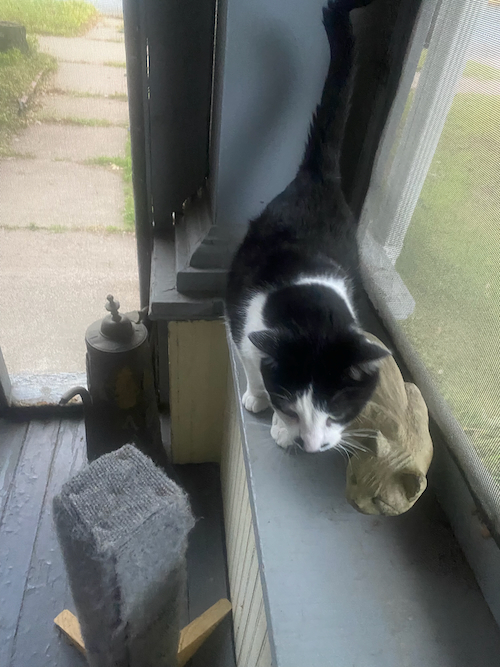
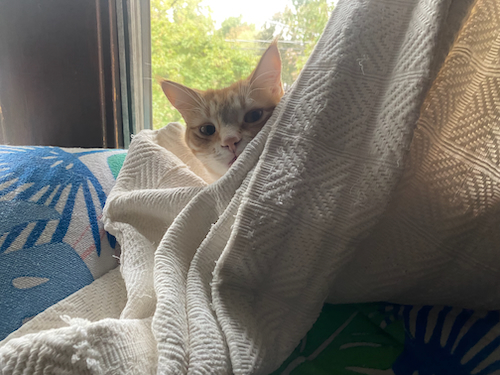
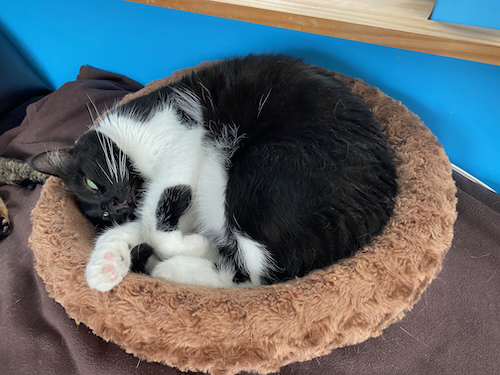
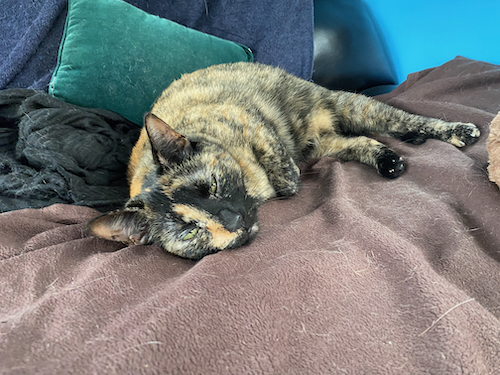



Recent comments